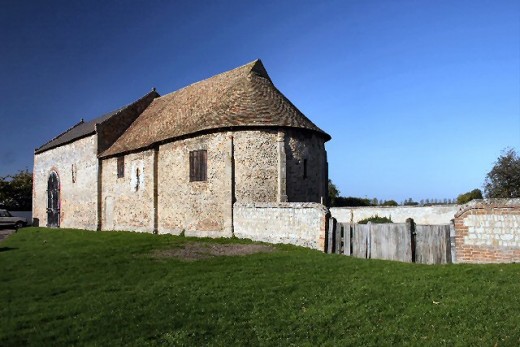- HubPages»
- Travel and Places»
- Visiting Europe»
- United Kingdom
English Heritage Properties in Cambridgeshire
Denny Abbey and Farmland Museum
Denny Abbey is just off the A10, about halfway between Cambridge and Ely.
The building was originally a Benedictine monastery, founded in 1159. By the time of the Dissolution of the Monasteries in the 1530s it was a nunnery run by the “Poor Clares”. After the Dissolution the buildings became a farm, and they stayed that way until the 1960s.
A notable tenant of the farm was Thomas Hobson (1544-1631) who was a carrier who kept a large stable of horses. When these were not needed for his business they were rented out to Cambridge students who always had to take the horse that was offered to them and not their personal preference. This is the origin of the expression “Hobson’s Choice”.
Visitors can trace the history of Denny Abbey from nunnery to farm – some of the nuns’ original floor tiles survived from when their refectory became a barn.
Some of the farm buildings house the Farmland Museum which displays items relating to the history of farming in the region. These include recreations of craftsmen’s workshops, a fenman’s hut from the 19th century and a village shop from the 1930s.

Duxford Chapel
This is in the village of Whittlesford (near Duxford) in the far south of Cambridgeshire.
It is a complete and well-preserved 14th century chantry chapel that was originally part of the Hospital of St John but is the only building that remains from that time.
A chantry chapel was dedicated for the purpose of holding masses for the soul of a named person, normally someone of wealth who had stipulated in his or her will that this be done. The practice was suppressed in 1545 during the reign of King Edward VI, and Duxford Chapel became a barn that was used by the owners of the Red Lion inn next door (which also survives).

Isleham Priory Church
Isleham is a small village to the southeast of Ely, close to the border with Suffolk. It is a remarkable survival from the past, being an almost perfectly preserved example of a Norman Benedictine priory church.
The priory was founded in 1090 but dissolved in 1414 – long before the Dissolution of the Monasteries under King Henry VIII. The church owes its preservation to having been used as a barn for much of its subsequent existence.

Longthorpe Tower
Longthorpe is a suburb of Peterborough, a cathedral city in north Cambridgeshire.
Longthorpe Tower was built in about 1300 as part of a fortified manor house, which has since disappeared. The tower, which is three storeys high, is not only an unusual structure to find in the heart of a city suburb, surrounded by modern housing estates, but it contains an important and very rare set of domestic wall paintings that date from the 14th century.
The paintings had been covered by whitewash at some point in the 16th century and only rediscovered in 1945. They adorn the walls and vault of the Great Chamber at the top of the tower.
The paintings have been described as a “spiritual encyclopedia”, although the subject matter is both religious and secular. Along with scenes of everyday life and representations of locally found birds there are depictions of the “Seven Ages of Man”, the “Labours of the Months” and “Wheel of the Senses”.








